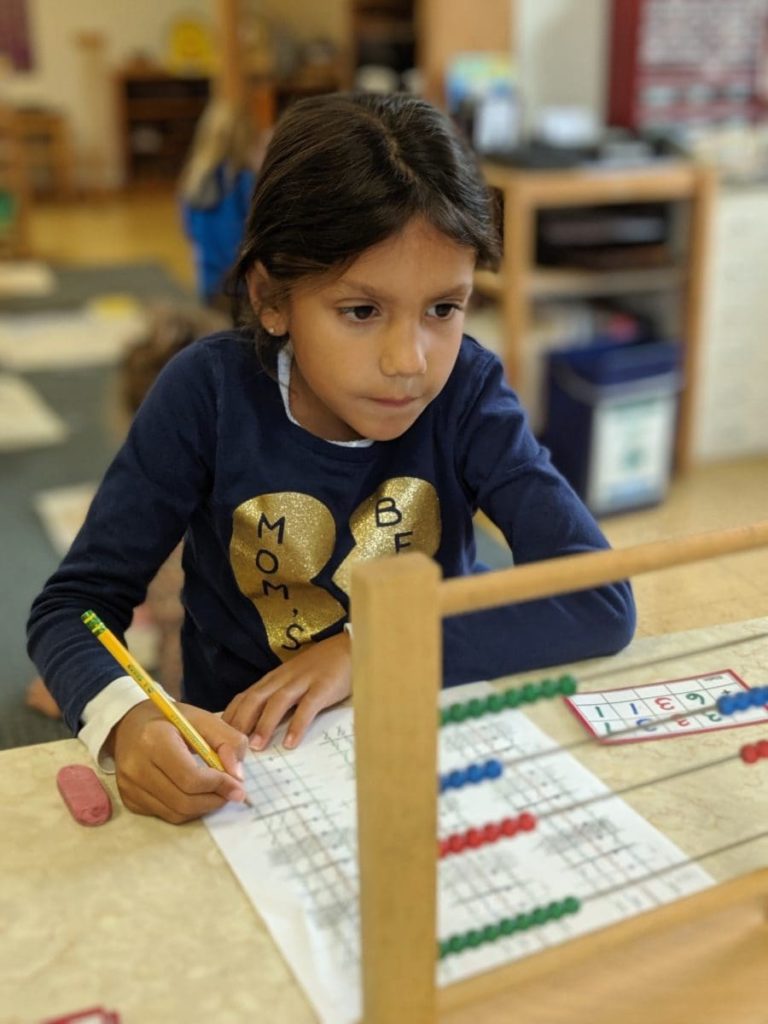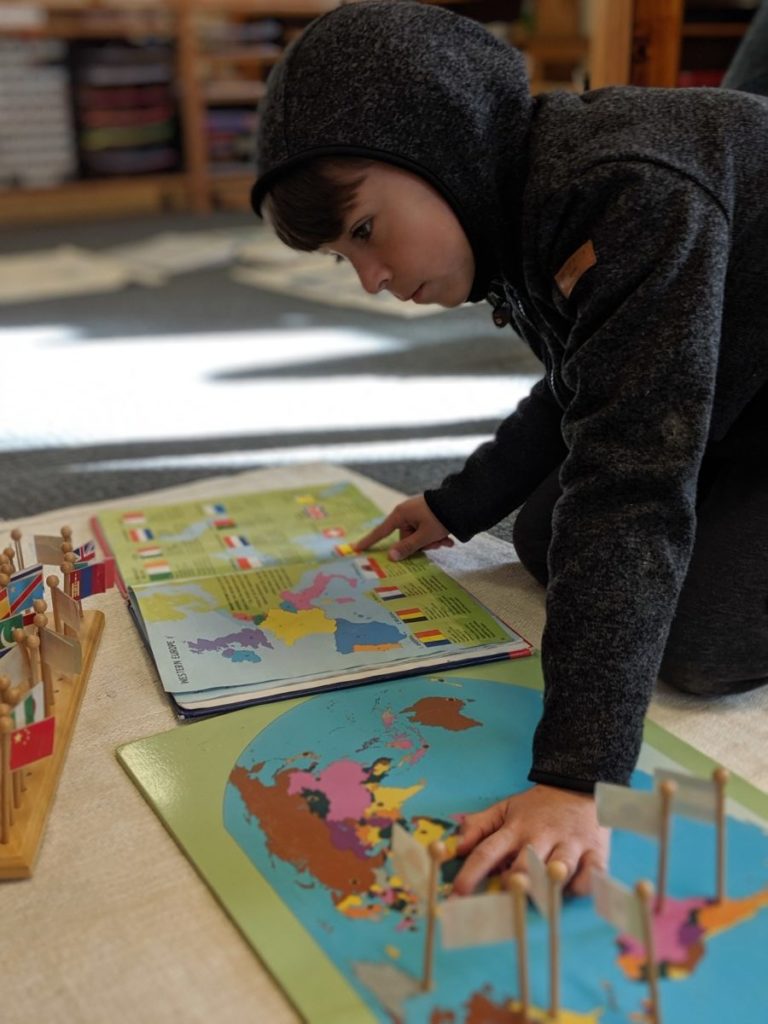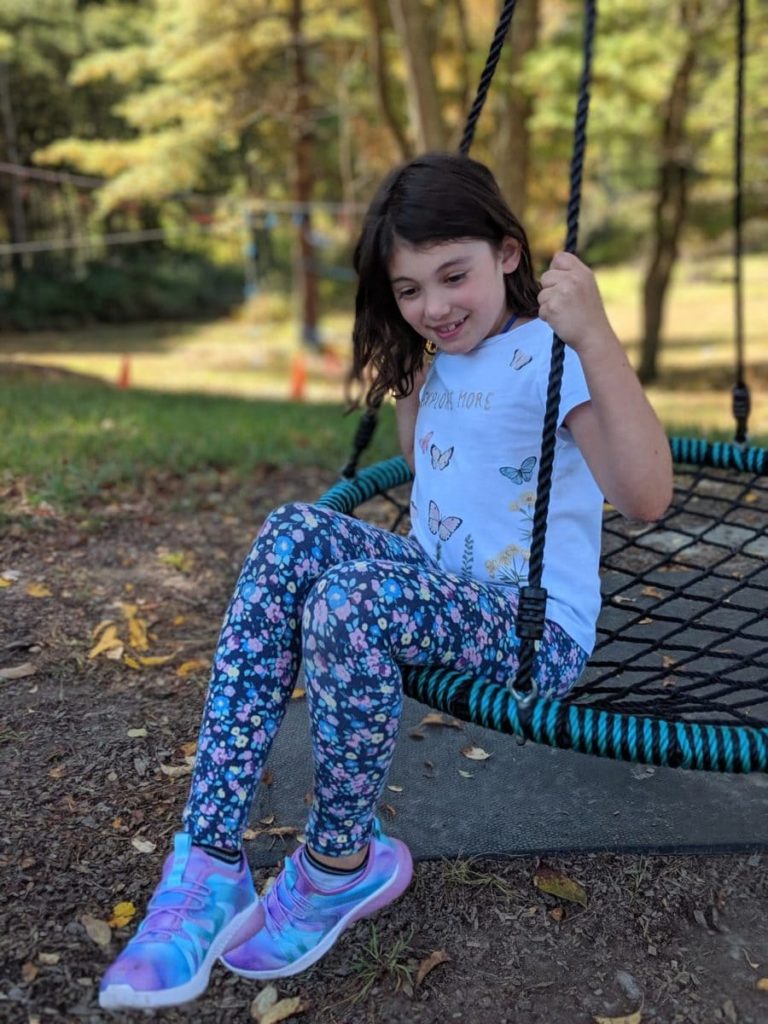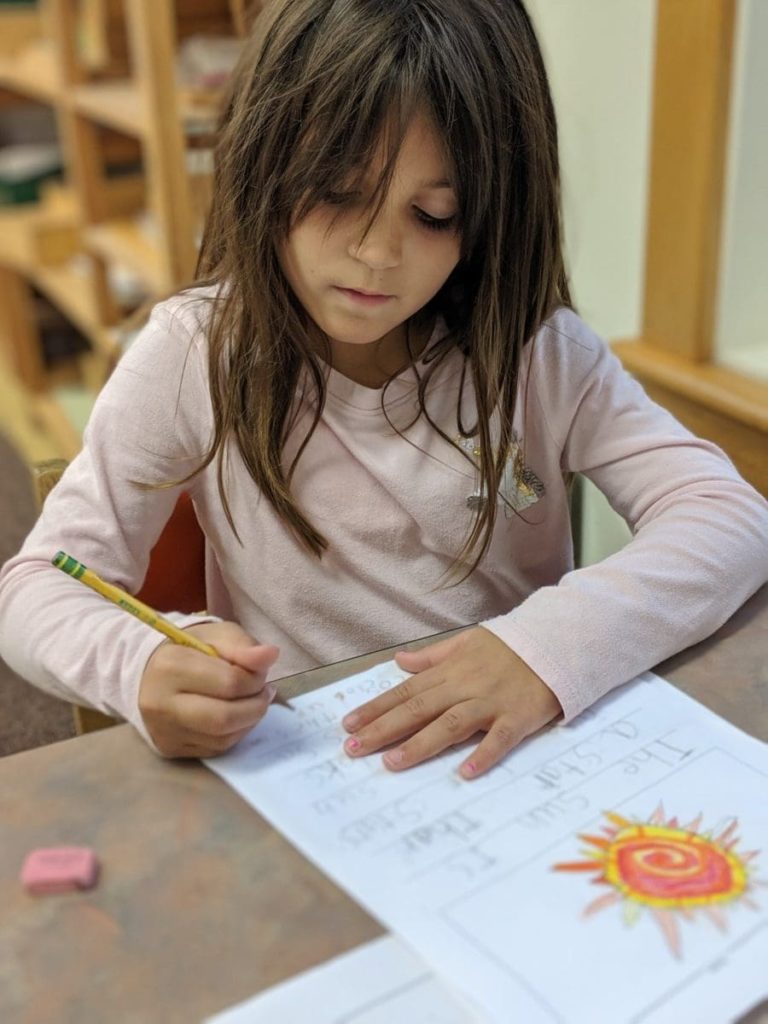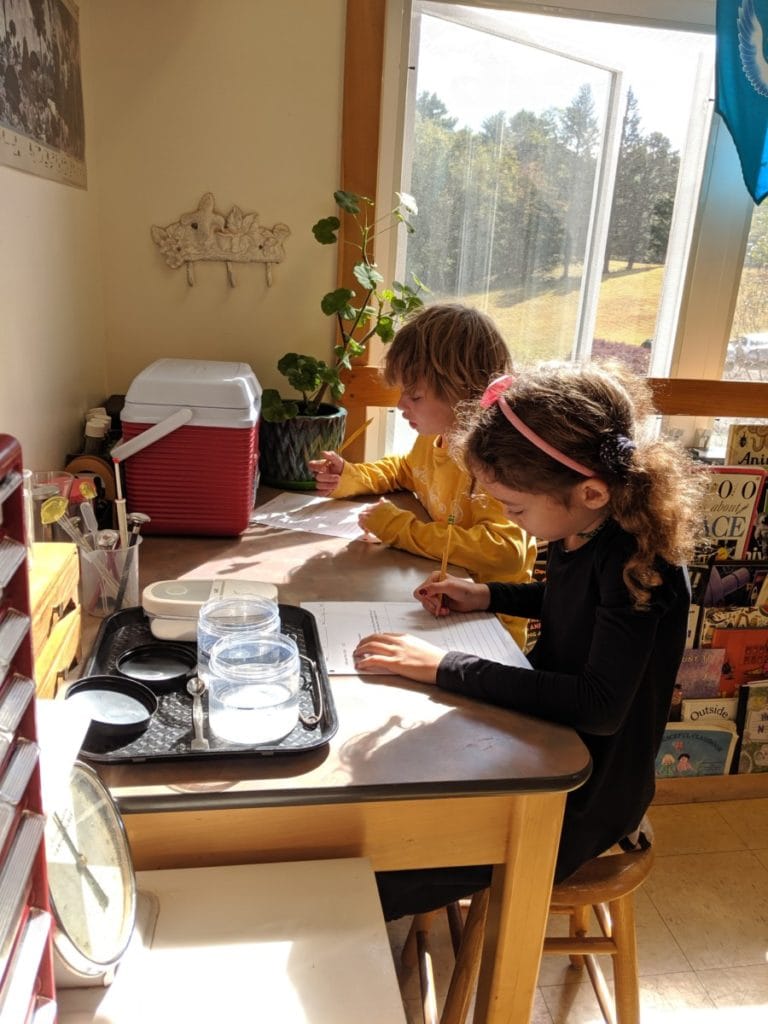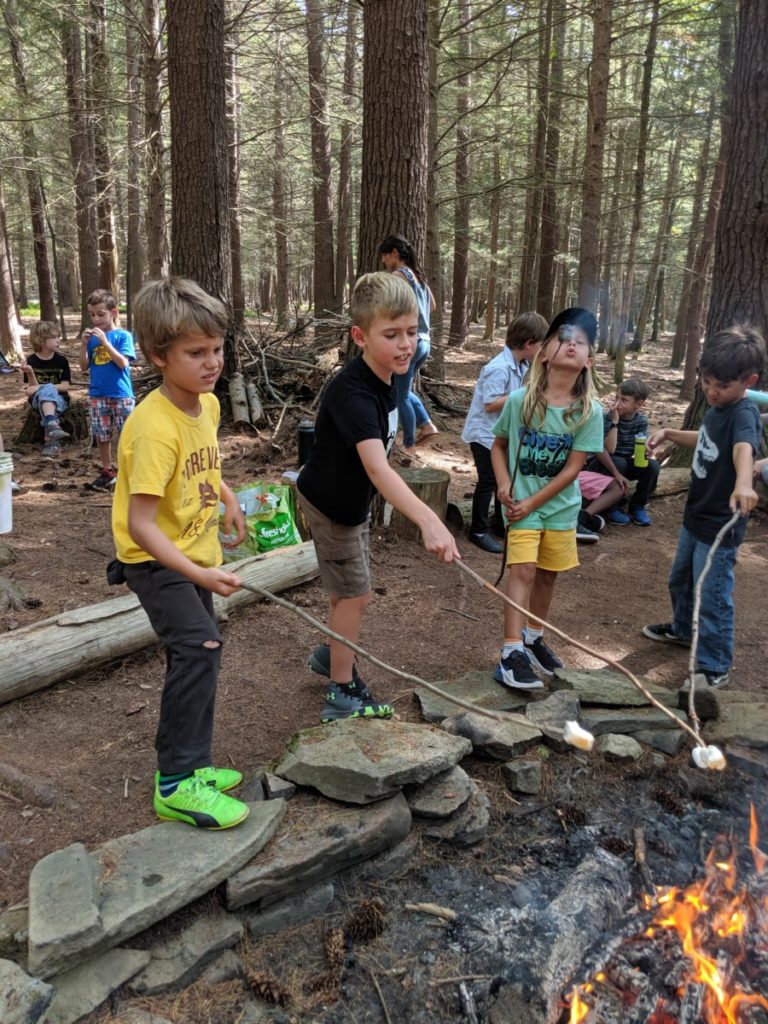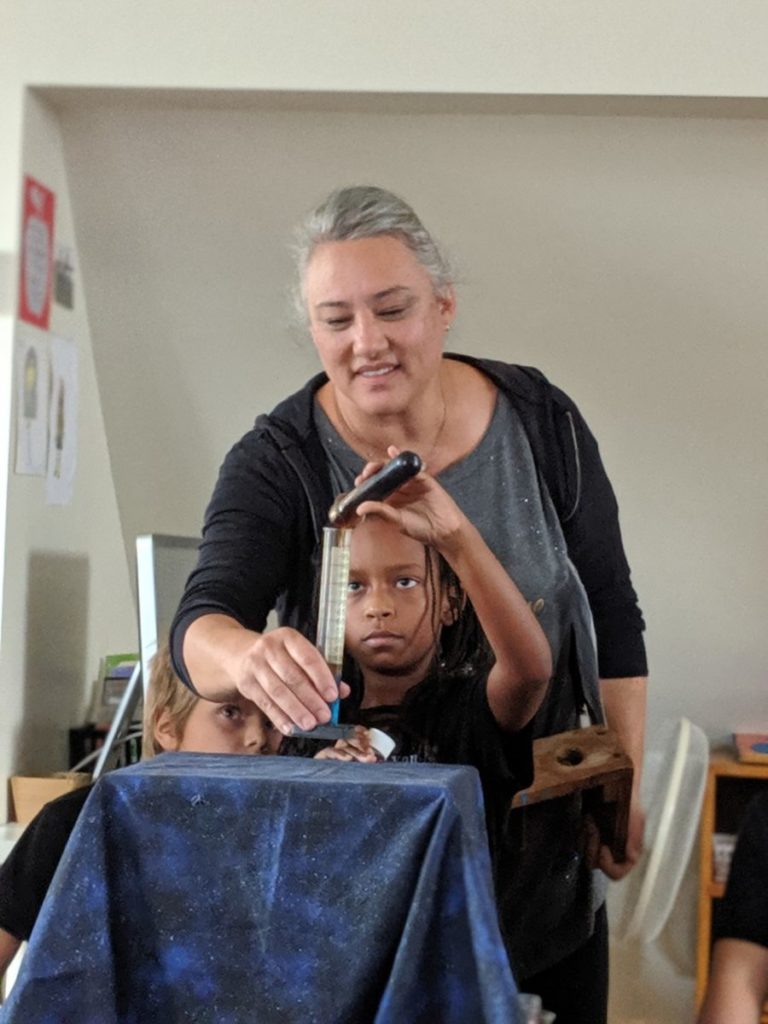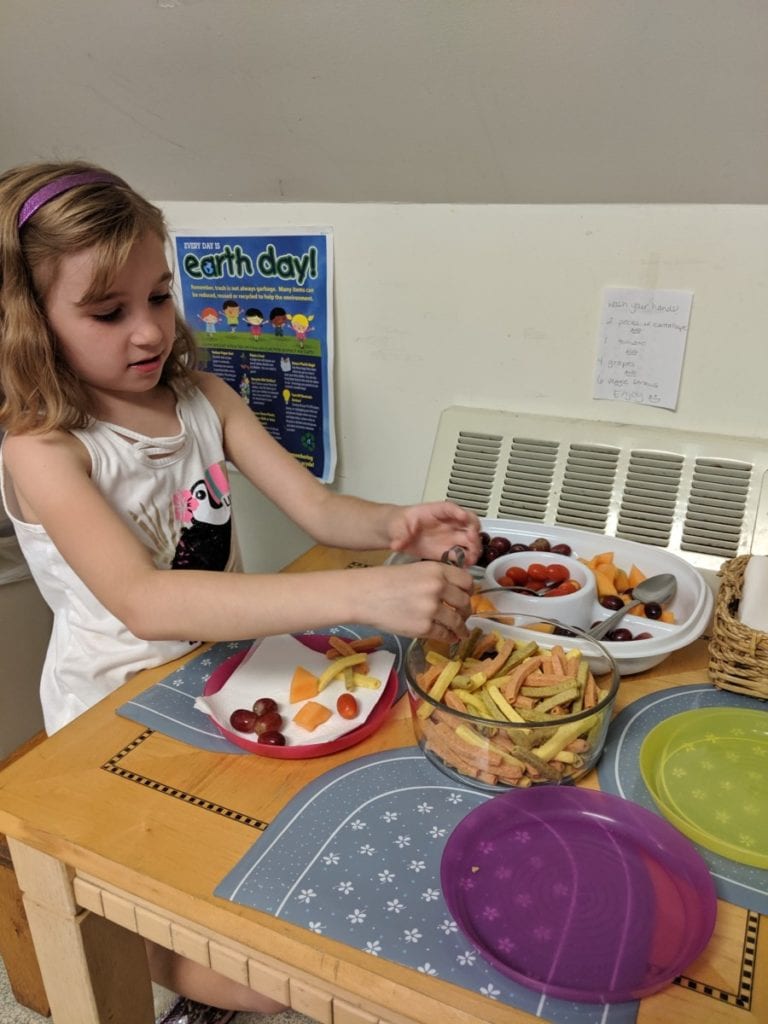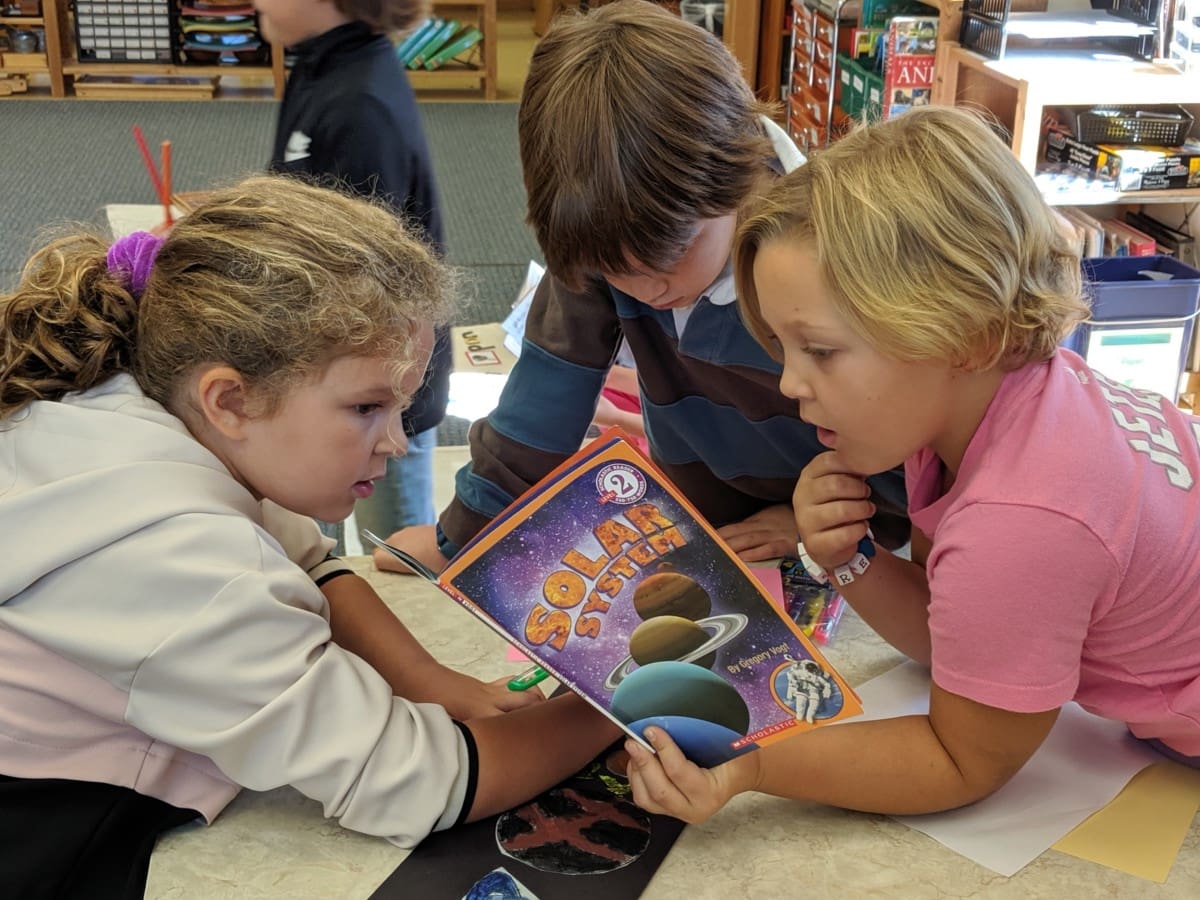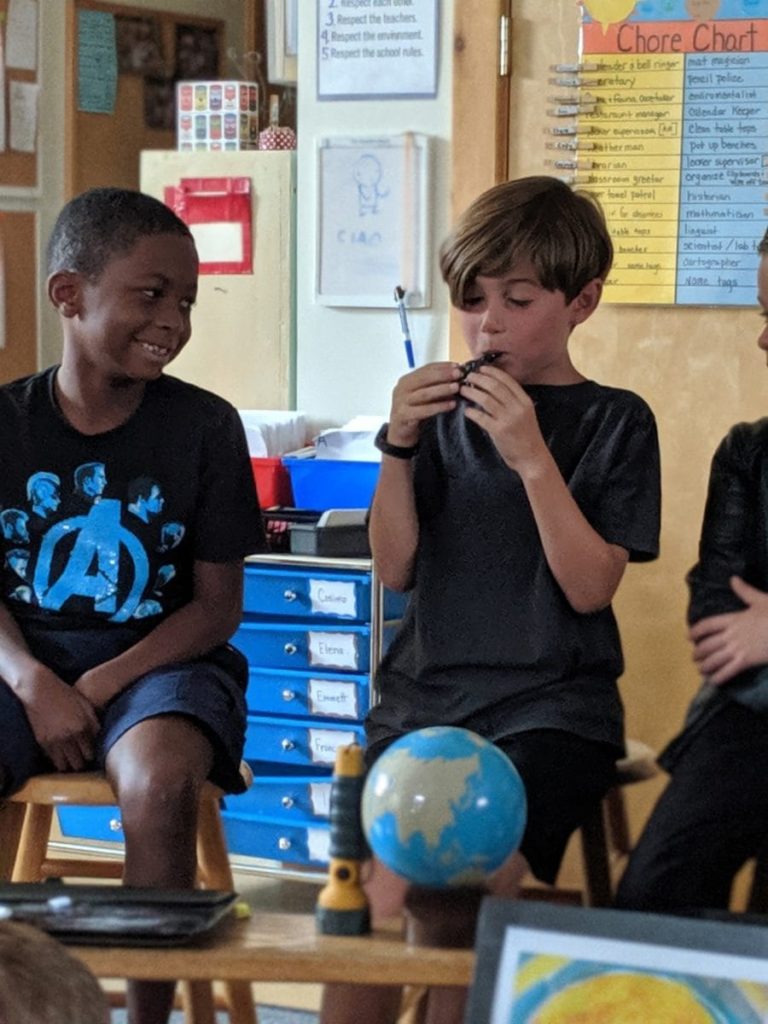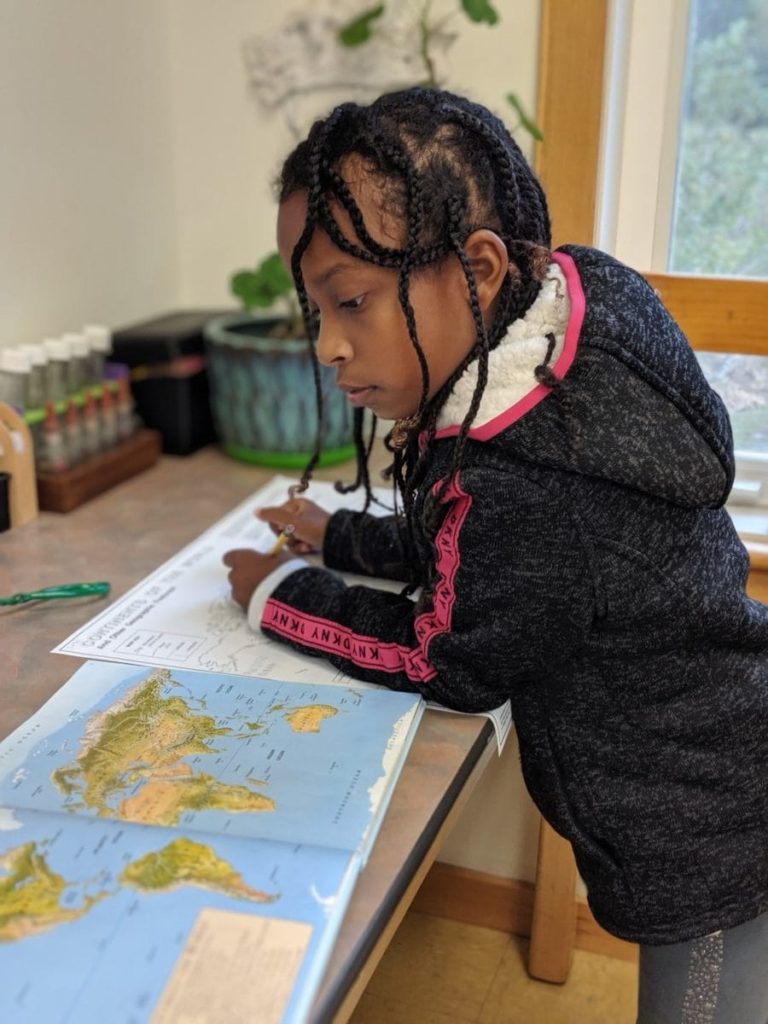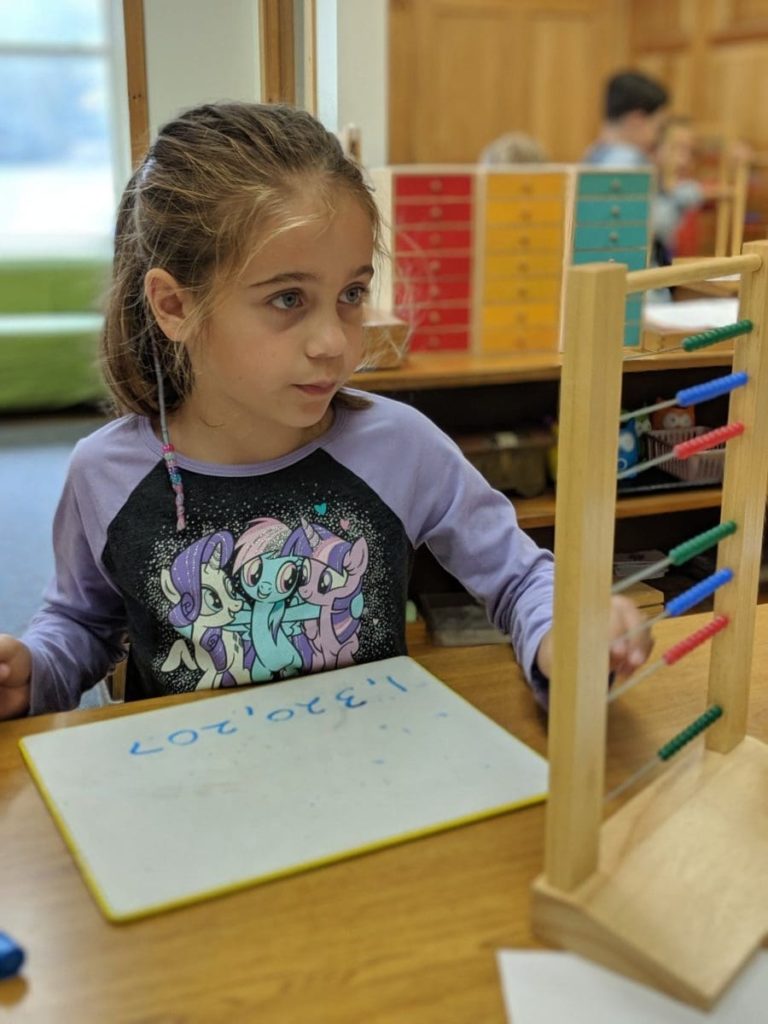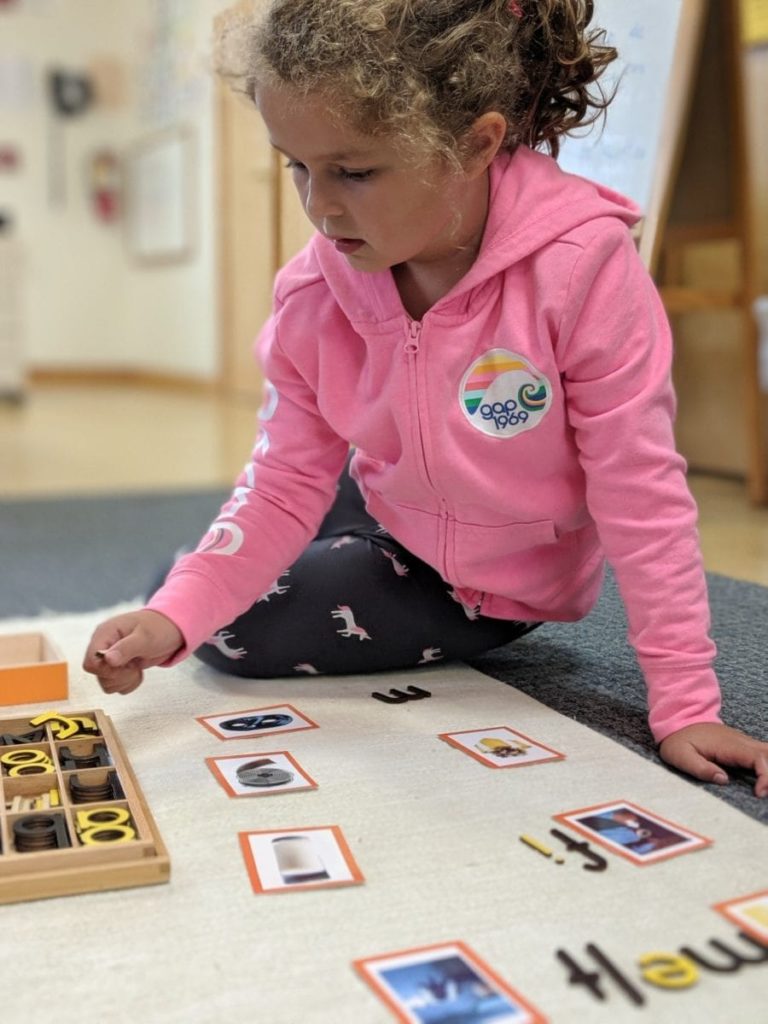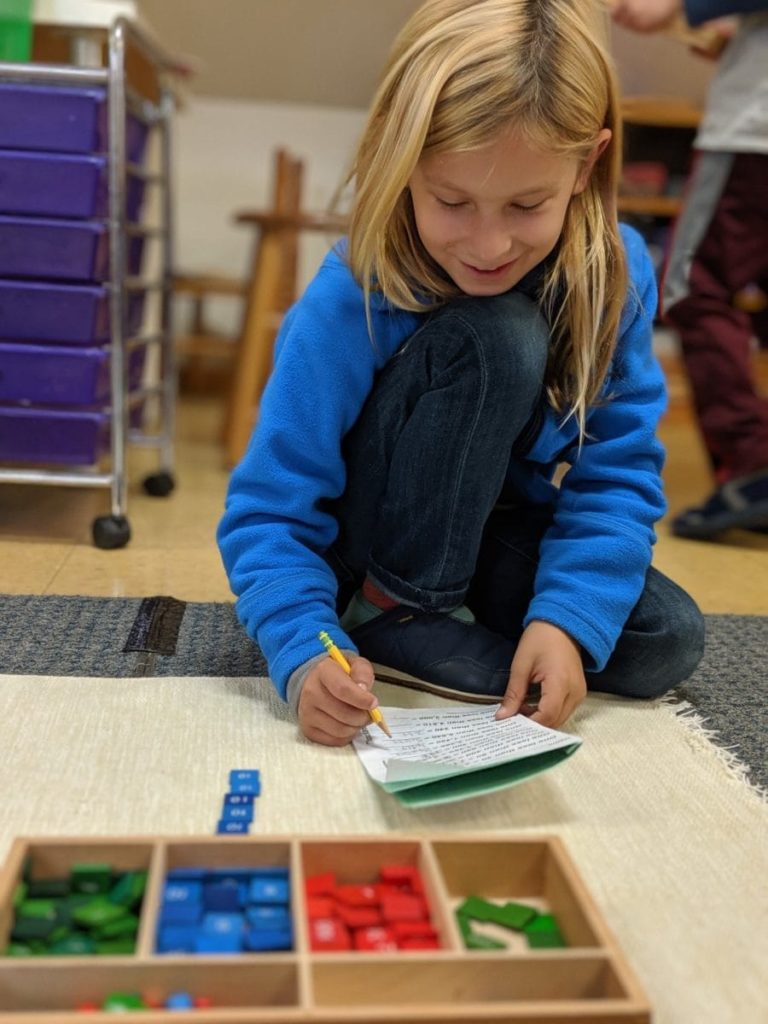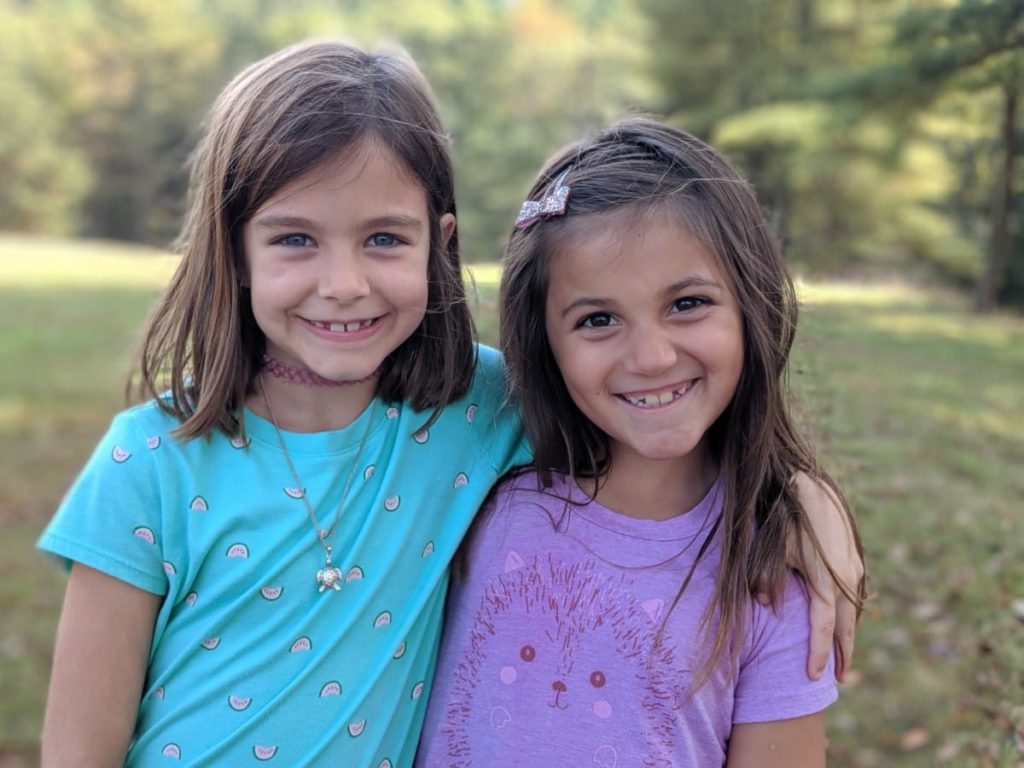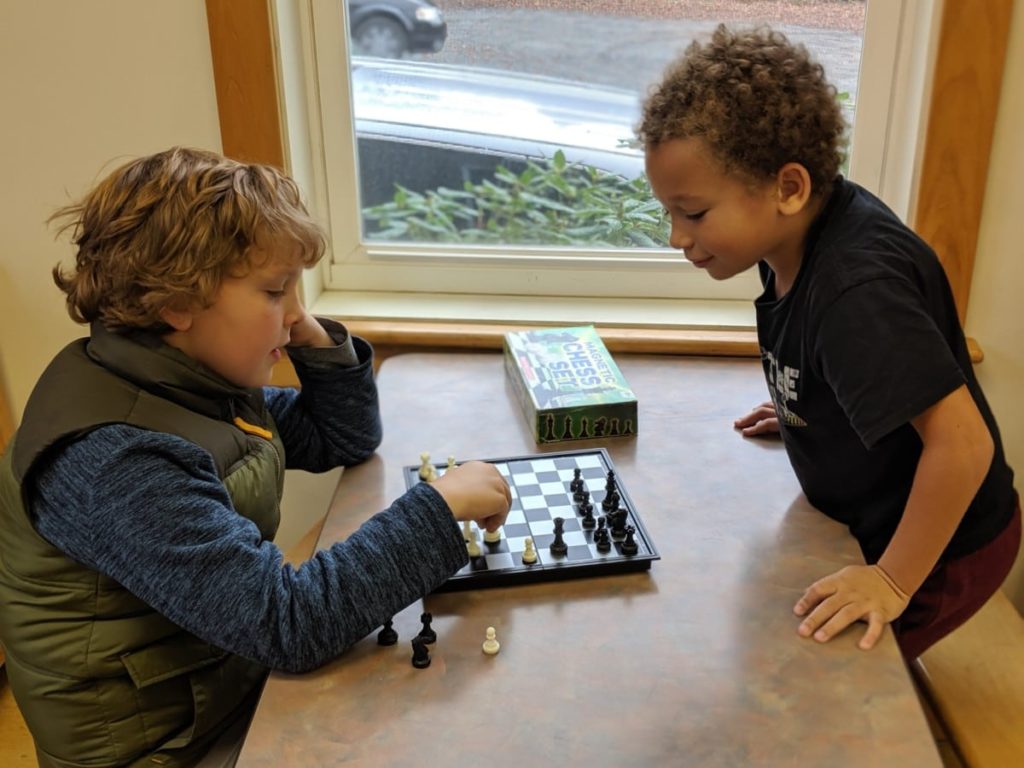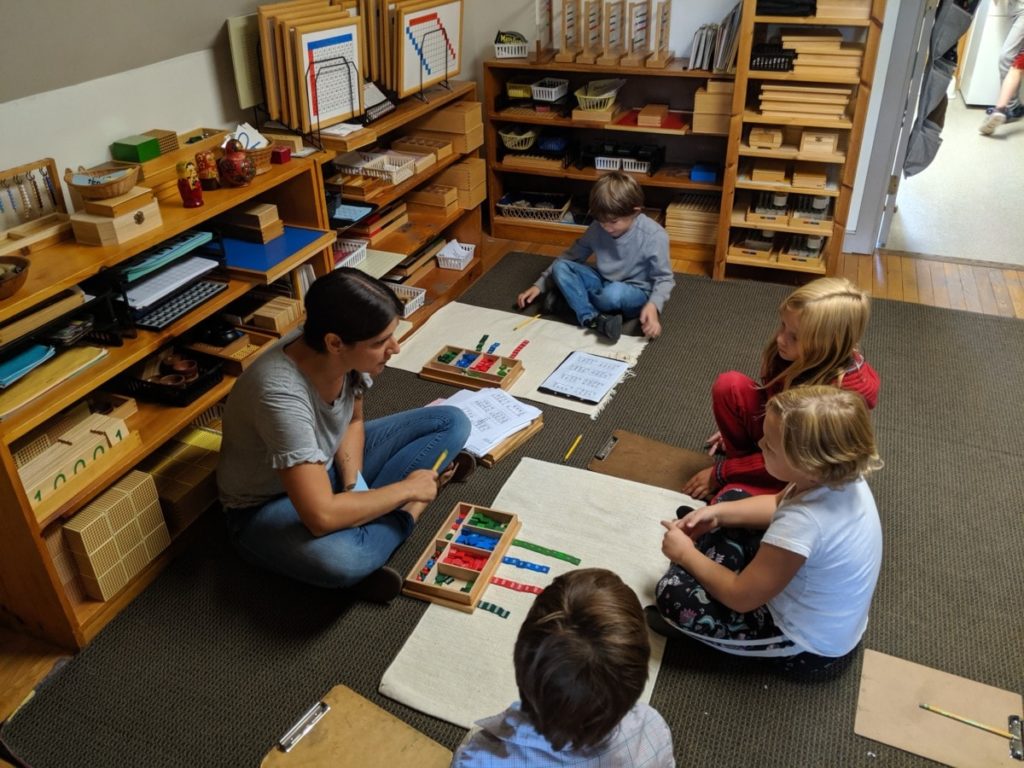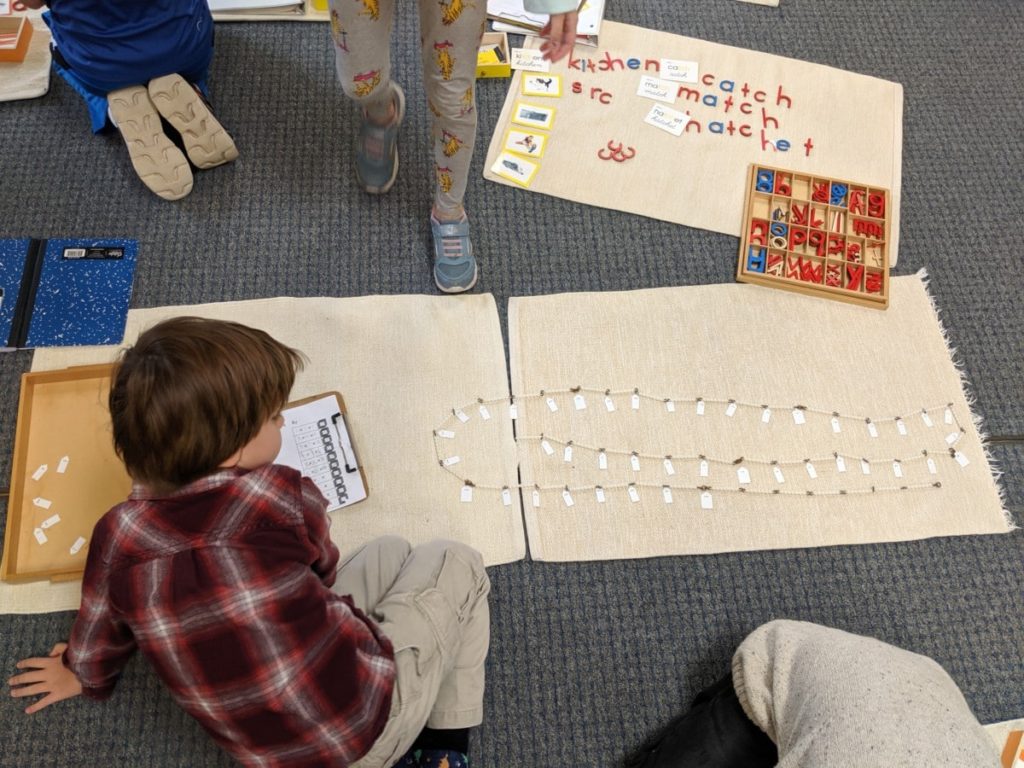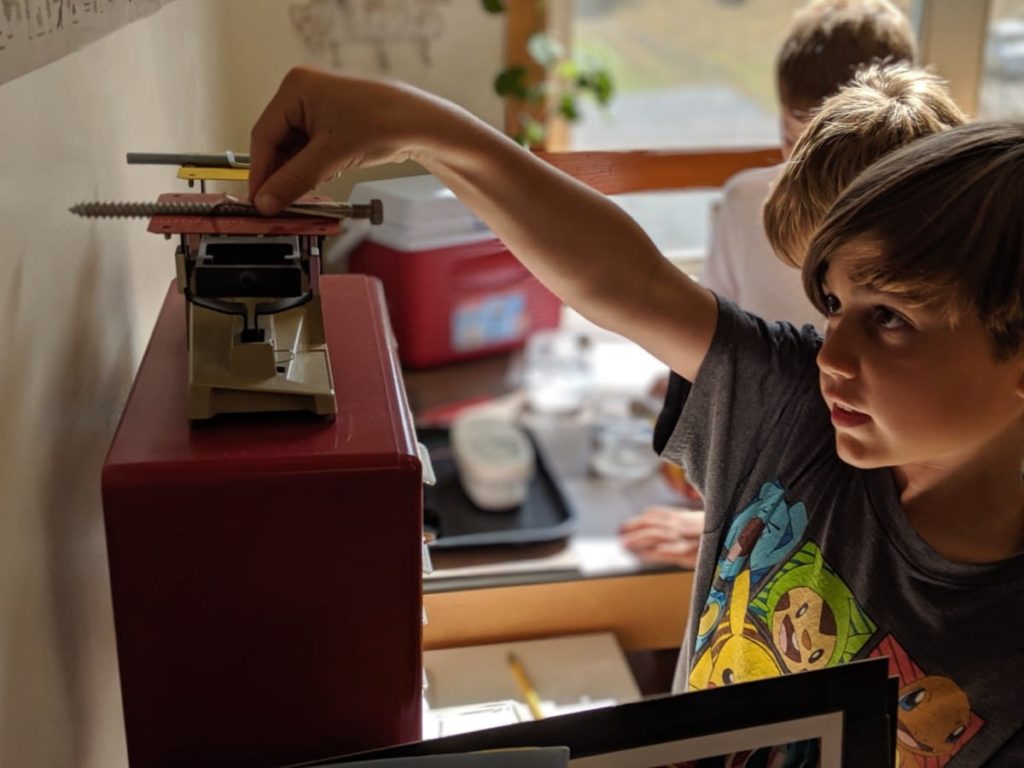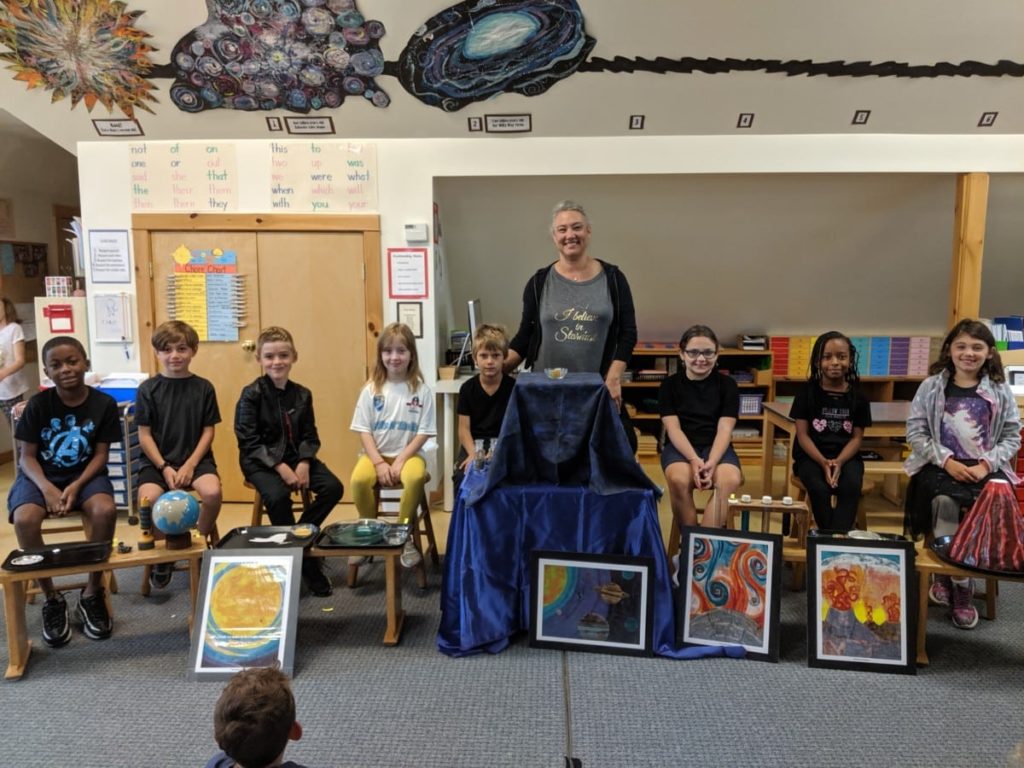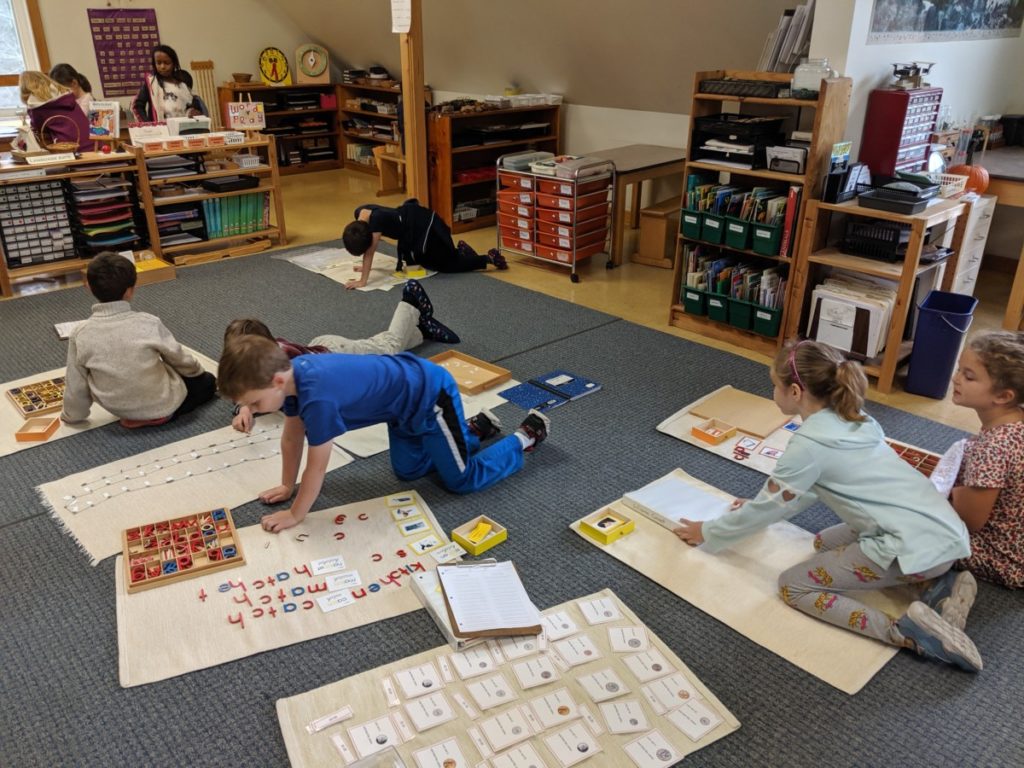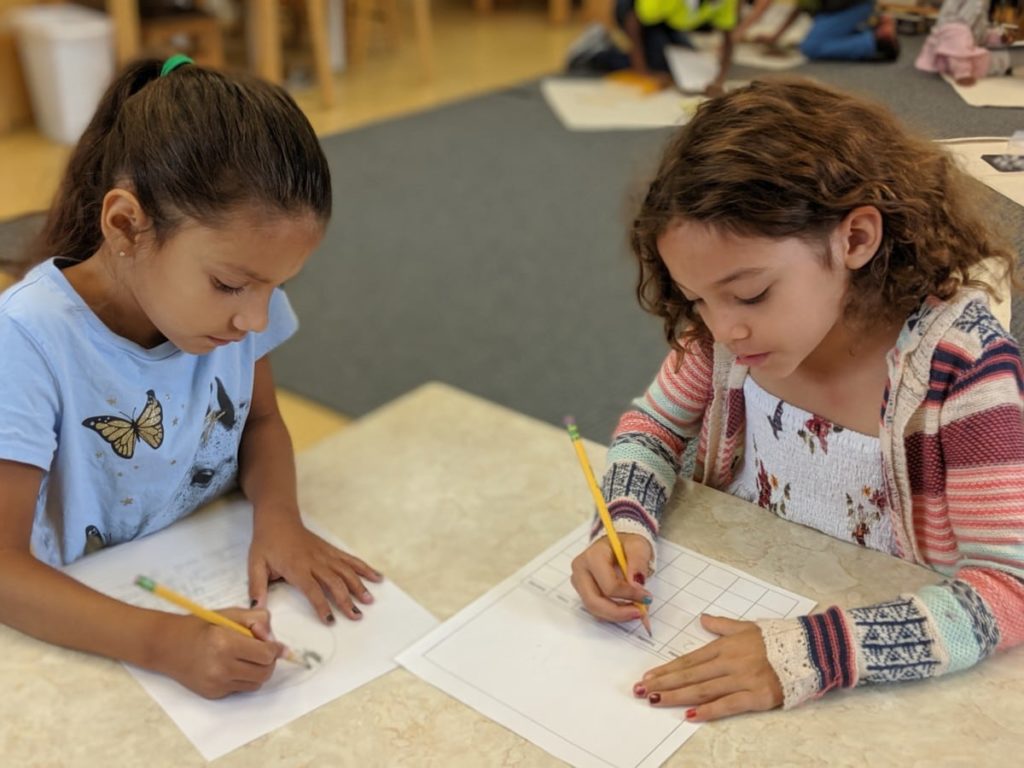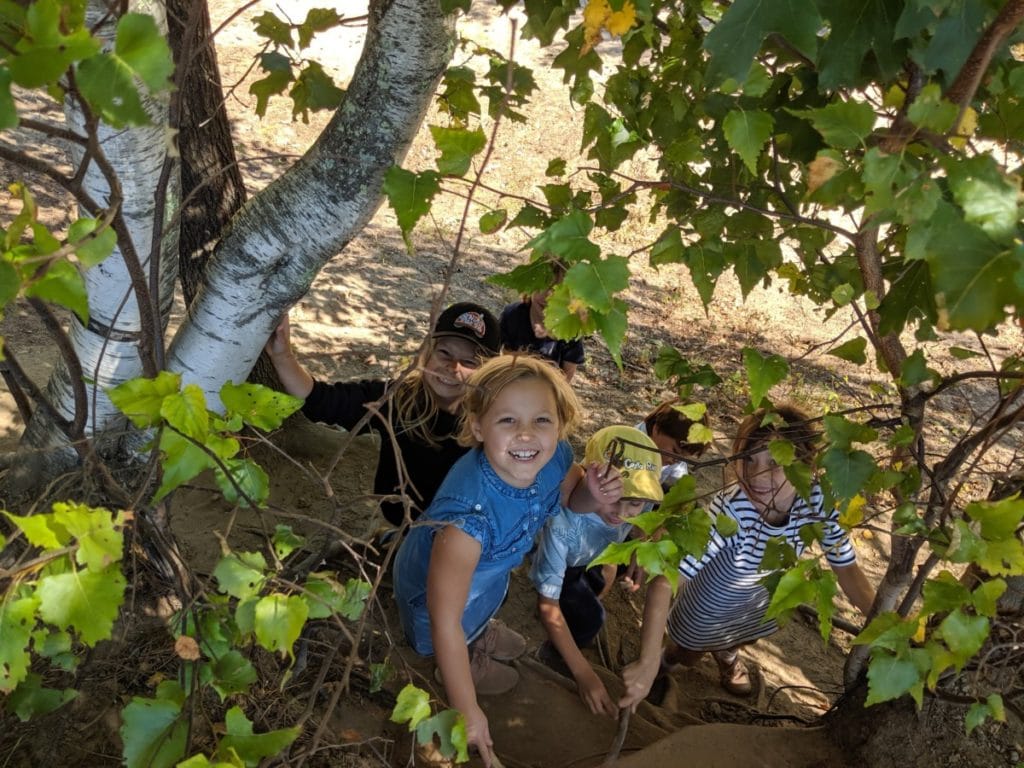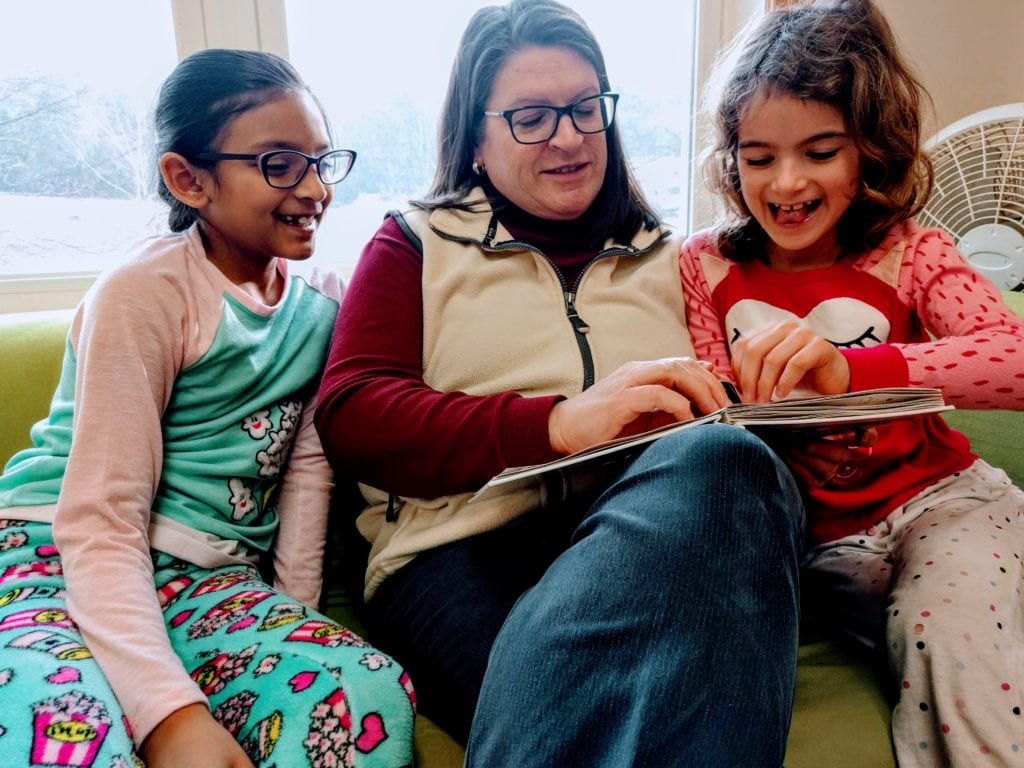Our six year elementary program has at its heart what Maria Montessori called “Cosmic Education.” The lower elementary portion, for those aged 6 through 9 years, is centered on Montessori’s Five Great Lessons.
These great lessons offer wide concepts and offer the structure into which all elementary learning can be integrated. Likewise, elementary students begin to move out of their narrow worlds into a newer, greater one, gaining independence as they care for their own classroom environment.
Preparing food and snacks, cleaning the classroom and tables at the end of the day, and disposing of compost, garbage, and recycling can now be the responsibility of the students. At the Homestead School, these early years also include venturing into a wider world of field trips, ski club, and outdoor adventures where exposure to new places, people, and ideas fill out a larger view of community.

